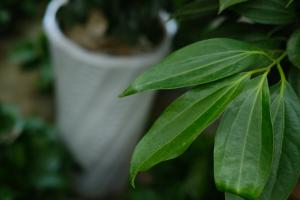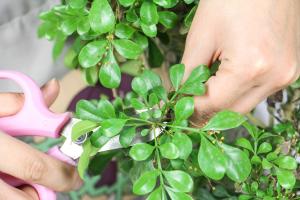Introduction
Ginger plants are a beautiful addition to any garden or home. Not only do they have lush foliage and bright flowers, but they also have a useful root that can be used for cooking and medicinal purposes. In order to keep your ginger plant thriving, it's important to know how to care for it properly. In this article, we鈥檒l walk you through the steps for caring for your ginger plant.
Location and Lighting
Ginger plants are native to tropical and subtropical regions, so it's important to recreate those conditions when caring for them. They need a warm and humid environment with plenty of bright but indirect light. It's best to place your ginger plant in a location that receives morning sun but is shaded in the afternoon. If you live in a colder climate, ginger plants can be grown indoors in a pot near a sunny window.
Watering and Fertilizing
Ginger plants require consistent moisture in order to thrive. They should be watered regularly, but not overwatered, as this can lead to root rot. The best way to ensure proper watering is to allow the top layer of soil to dry out slightly before watering again. In addition to regular watering, ginger plants benefit from monthly fertilization with a balanced fertilizer that is high in nitrogen.
Pruning and Harvesting
As your ginger plant grows, you may need to prune it back in order to keep it from getting too bushy. This is best done in the spring and summer months. When it comes time to harvest your ginger, wait until the plant has reached maturity, usually around 8 to 10 months. You'll know it's ready when the leaves start to turn yellow and the stem begins to wither. To harvest, carefully dig up the entire plant and gently break off the roots.
Pests and Diseases
Like all plants, ginger plants are susceptible to pests and diseases. The most common pests that affect ginger plants are aphids, spider mites, and mealybugs. These can be treated with an insecticide or by using natural remedies like neem oil or insecticidal soap. When it comes to diseases, the most common issue with ginger plants is fungal infections. In order to prevent these, it's important to ensure proper air circulation and always water at the base of the plant, avoiding the leaves.
Conclusion
With the right care, ginger plants can be a beautiful and productive addition to your garden or home. Make sure to provide them with plenty of bright but indirect light, consistent moisture, and monthly fertilization. Remember to prune and harvest as necessary, and keep an eye out for pests and diseases. With just a little bit of attention, your ginger plant will thrive and provide you with years of enjoyment.

 how many times do yo...
how many times do yo... how many planted tre...
how many planted tre... how many pine trees ...
how many pine trees ... how many pecan trees...
how many pecan trees... how many plants comp...
how many plants comp... how many plants can ...
how many plants can ... how many plants and ...
how many plants and ... how many pepper plan...
how many pepper plan...






























